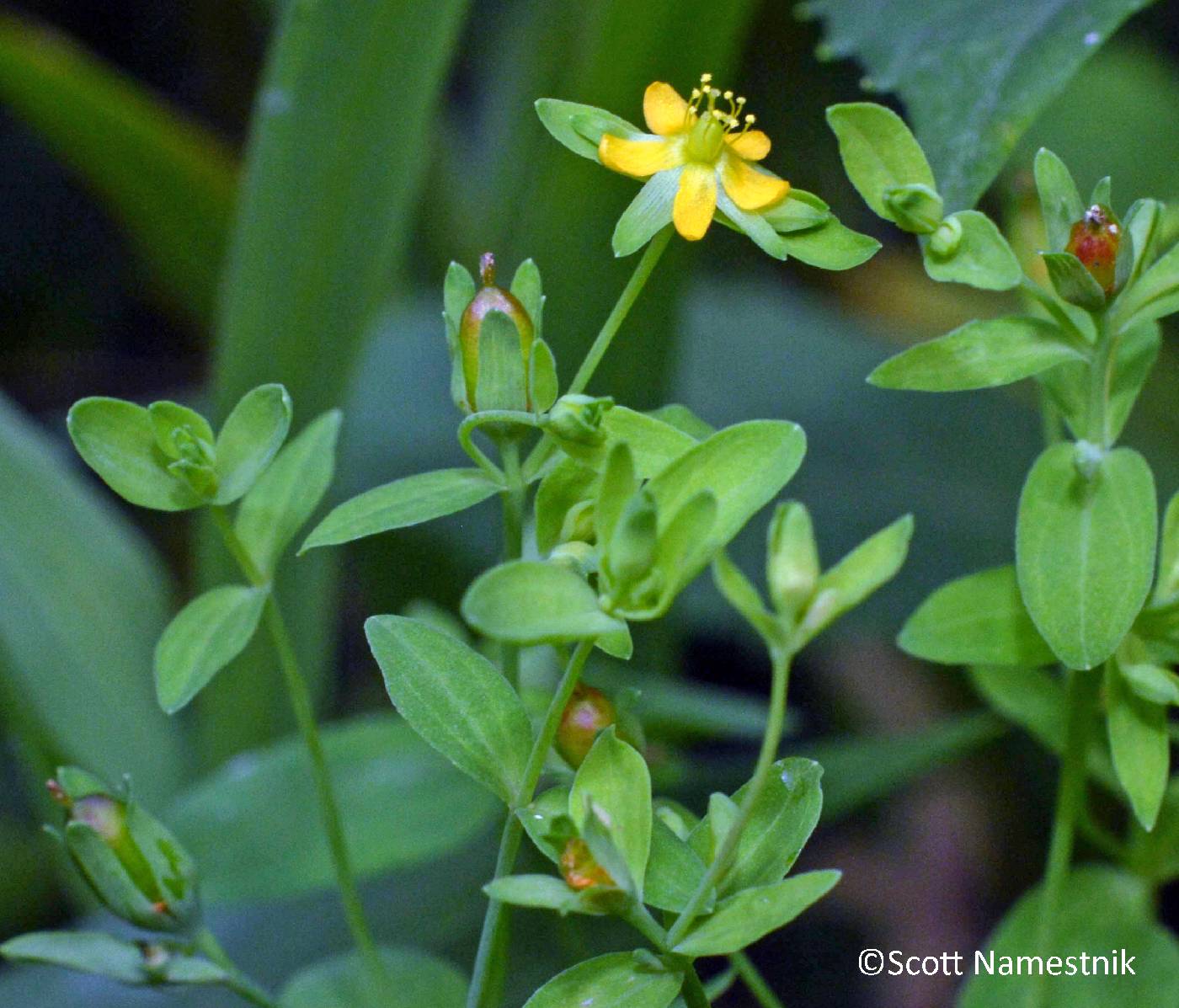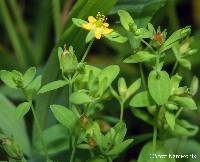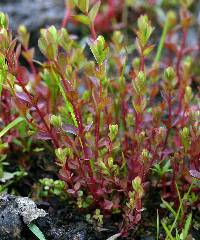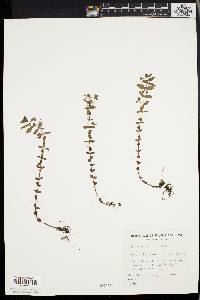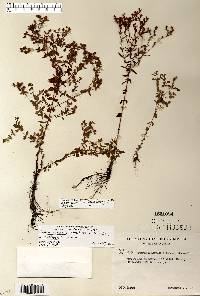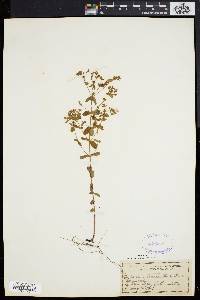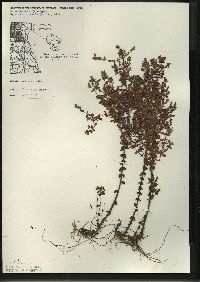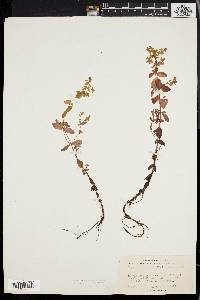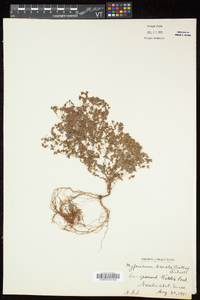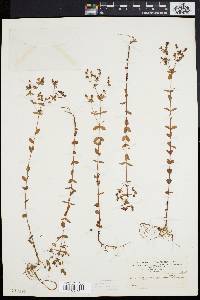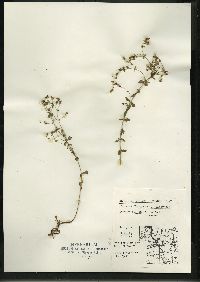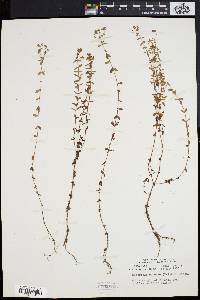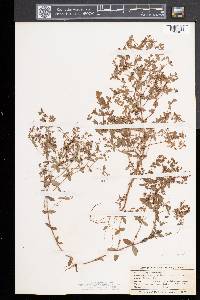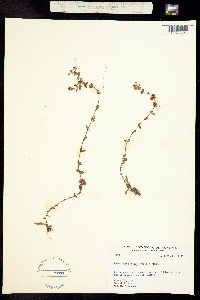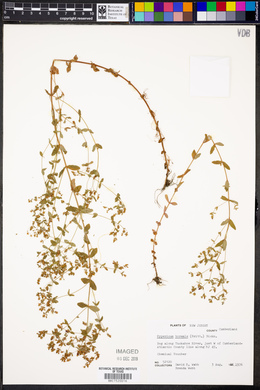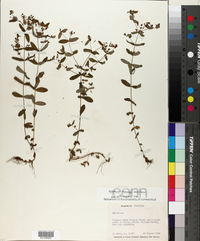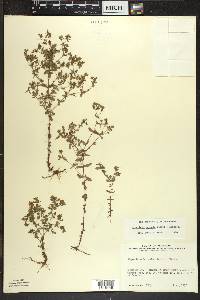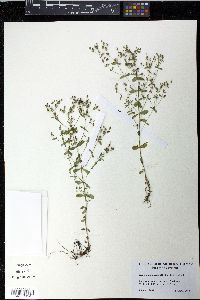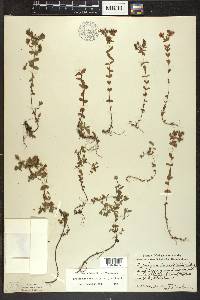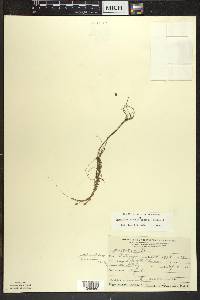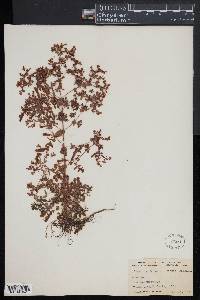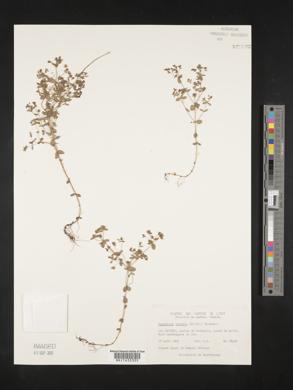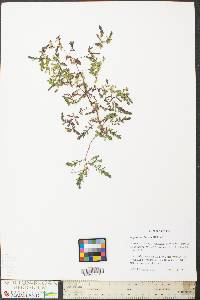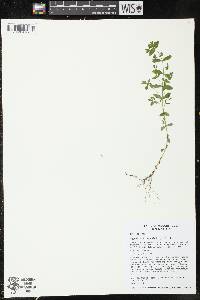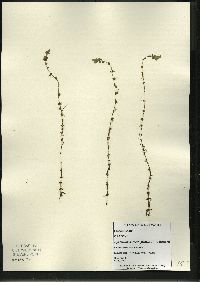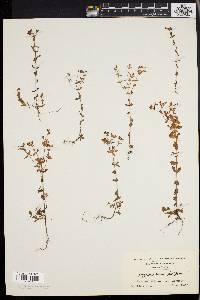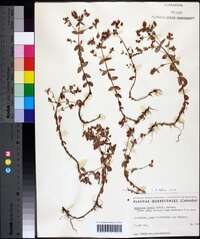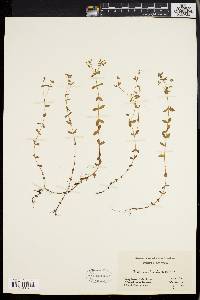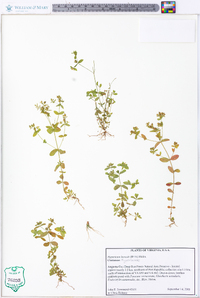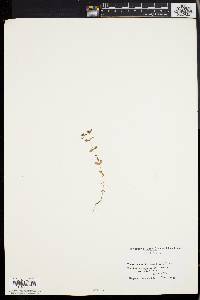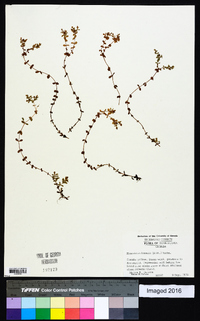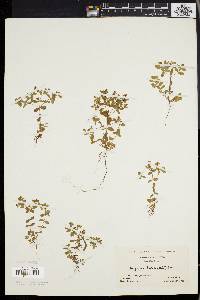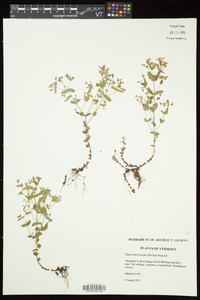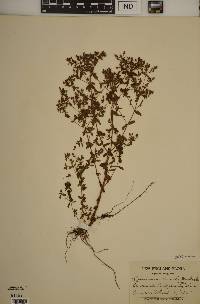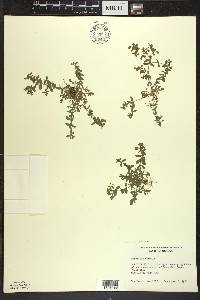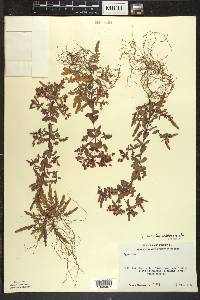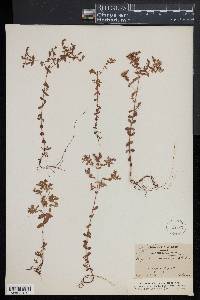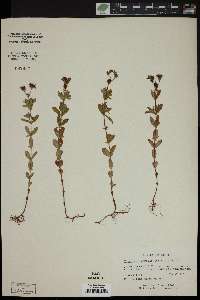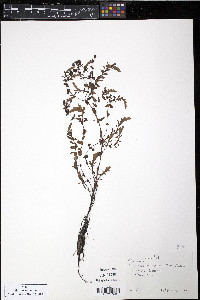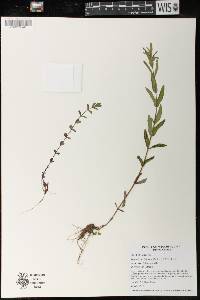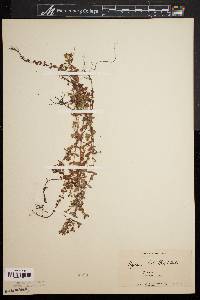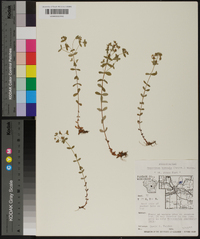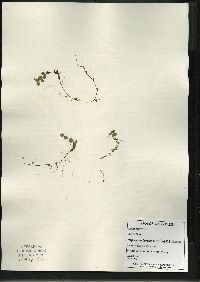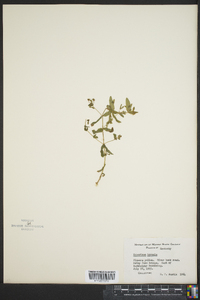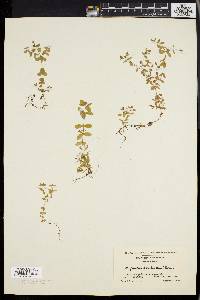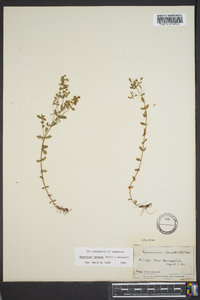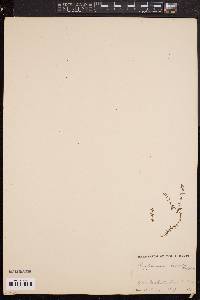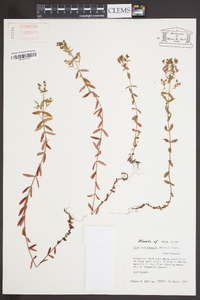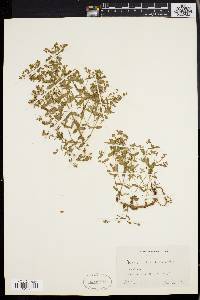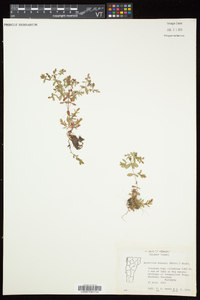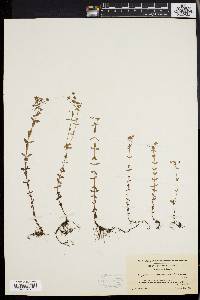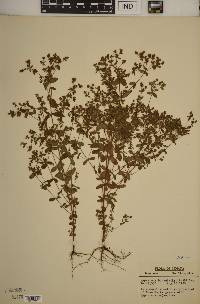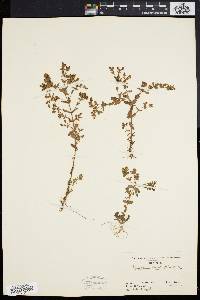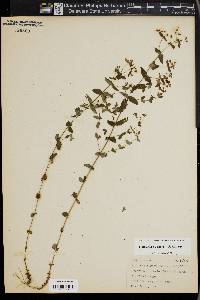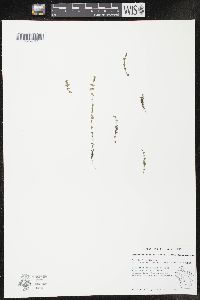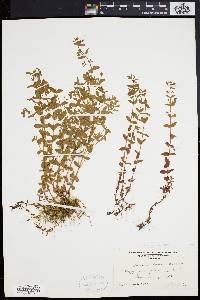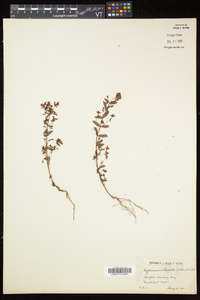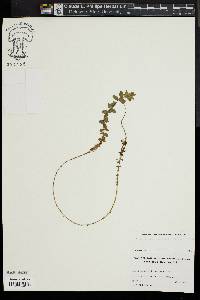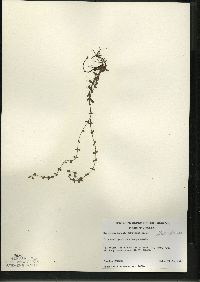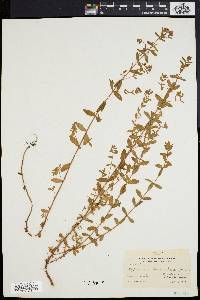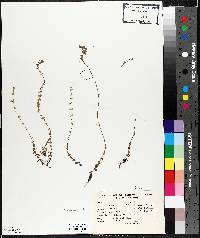
|
|
|
|
Family: Hypericaceae
Northern St. John's-Wort
[Hypericum boreale f. callitrichoides Fassett] |
Perennial herb 10 - 40 cm tall Stem: highly branched near the top. Leaves: opposite, stalkless, to 2 cm long, to 10 mm wide, elliptic to oblong or oval and blunt to rounded on both ends, non-toothed, three- to five-veined. Flowers: subtended by elliptic leaf-like bracts, with blunt sepals much shorter than the fruit, five yellow petals 2.5 - 3 mm long, eight to fifteen stamens, and three styles less than 1 mm long. Fruit: a one-chambered capsule, dark purple, 3 - 5 mm long, elliptic, rounded at the top, containing many 0.6 - 0.75 mm long seeds. Similar species: Hypericum boreale, Hypericum canadense, Hypericum gentianoides, Hypericum gymnanthum, Hypericum majus, and Hypericum multilum have fewer than 25 stamens per flower. Hypericum canadense differs because it is 10 cm - 0.6 m tall, the linear to lance-shaped leaves are more than three times as long as wide and single-veined or lightly three-veined, and the flowers have awl-shaped bracts, sepals less than 4.5 mm long, petals 2.5 - 3 mm long, and twelve to 22 stamens. Hypericum gentianoides has green wiry stems that are highly branched, minute scale-like leaves that are pressed against the stems, tiny yellow flowers with five petals and five to ten stamens, and capsules two to three times the length of the sepals. Hypericum gymnanthum is distinguished because the stems are usually unbranched, the leaves are triangular lance-shaped or triangular egg-shaped and rarely more than three times as long as wide, the flowers have awl-shaped bracts and lance-shaped sepals beneath the 3 - 3.5 mm long petals and ten to fourteen stamens, and the capsules are lance-shaped to narrow conical and 3 - 5 mm long. Hypericum majus has lance-shaped leaves that are more than three times as long as wide and five- to seven-veined, and flowers with awl-shaped bracts, 4.5 - 6.5 mm long sepals, 3.5 - 4 mm long petals, and fourteen to 21 stamens. Hypericum multilum differs by its stems that are highly branched near the top, leaves that are rarely more than three times as long as wide, flowers having 1 - 4 mm long awl-shaped bracts and linear-oblong sepals beneath the 1.5 - 2.5 mm long petals and five to sixteen stamens, and capsules that are rounded at the tip and 2 - 3.5 mm long. Flowering: early August to early October Habitat and ecology: Local in sandy areas of marsh borders and muddy soil. Occurence in the Chicago region: native Etymology: Hypericum is the Greek name for St. John's Wort, which blooms around St. John's Day (June 24). Boreale means northern, referring to its native range. Author: The Morton Arboretum Perennial from slender rhizomes, 1-4 dm, much- branched above; lvs sessile, elliptic, oblong, or oval, obtuse or rounded at both ends 3-5-nerved, the larger ones 1-2 cm, half or a third as wide; bracts like the cauline lvs but smaller; sep blunt, evidently shorter than the ellipsoid fr, this 3-5 mm, deep purple, unilocular; pet 2.5-3 mm; stamens 8-15; styles 3(4), under 1 mm; seeds 0.6-0.75 mm; 2n=16. Wet, sandy or mucky soil; Nf. and Que. to w. Ont., s. to Va., O., Ind., and n. Ill. July-Sept. Gleason, Henry A. & Cronquist, Arthur J. 1991. Manual of vascular plants of northeastern United States and adjacent Canada. lxxv + 910 pp. ©The New York Botanical Garden. All rights reserved. Used by permission. From Flora of Indiana (1940) by Charles C. Deam In marshes and wet sandy places about lakes. ...... Indiana Coefficient of Conservatism: C = 8 Wetland Indicator Status: OBL |

